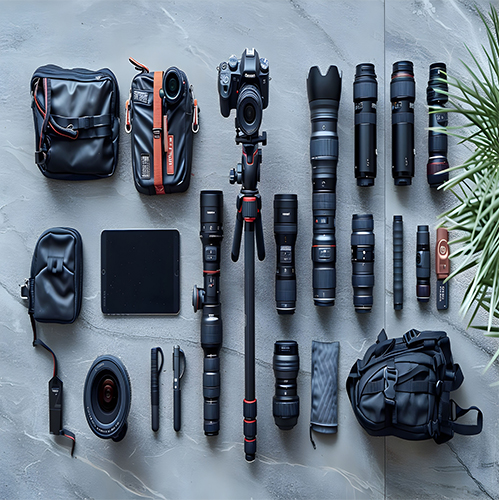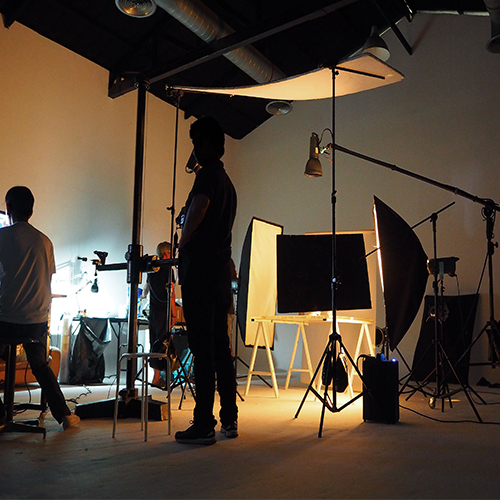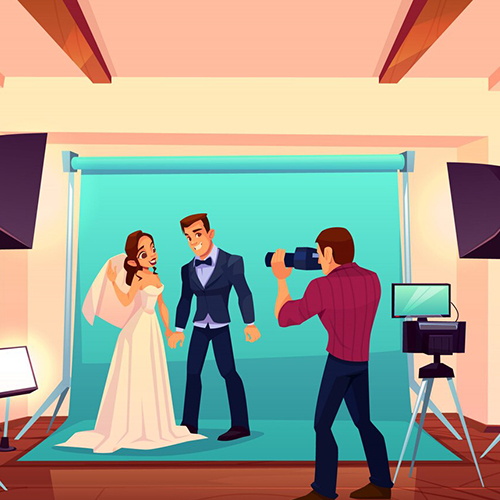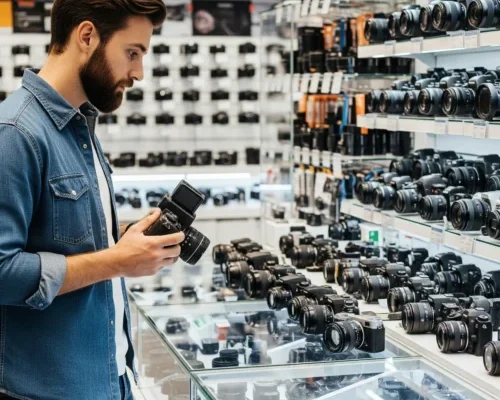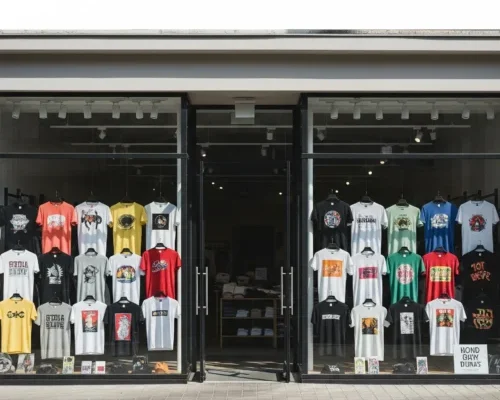Finding your dream camera can be tricky with so many models and features out there…
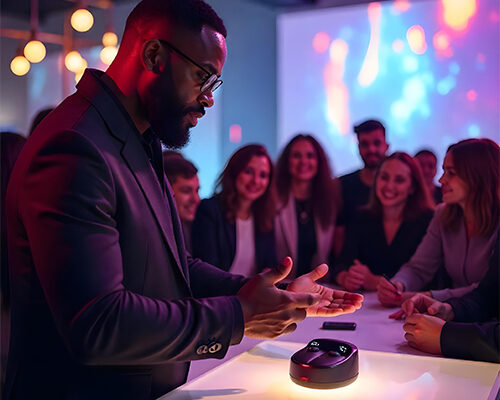
Professional Event Photography: Best Practices and Tips
As a professional event photographer, your job is to capture the heart and soul of special moments, whether it’s a wedding, a conference, or a product launch. These photos will become cherished memories for everyone involved, so it’s important to get them just right. In this article, we’ll walk you through the essential steps to make sure your event photography is top-notch from planning ahead to editing and delivering the final images.
1. Plan Ahead
To capture great event photos, start by understanding the event’s theme and key moments. Visit the venue in advance to check the layout and lighting. Make a list of important shots and confirm all logistical details. Communicate clearly with the client to understand their needs and be prepared for any surprises during the event. This preparation helps ensure you capture the best moments and handle any issues smoothly.
Understand the Event
Before the event photography, make sure you understand the theme and goals. Look over the event schedule, speaker list, and program to spot key moments and great photo opportunities. This will help you be ready to capture the most important moments. Taking the time to prepare ensures you’ll deliver the best results.
Scout the Venue
Visit the venue ahead of time to get familiar with the layout, lighting, and any challenges. Look for the best spots to shoot from and check out the sound and lighting systems. Knowing these details will help you plan your shots and avoid surprises on the day of the event. A little preparation goes a long way in ensuring everything runs smoothly.
Plan Your Shots
Make a mental or written list of the key shots you want to capture. Remember important moments like speeches, awards, and networking. Also capture candid photos of people laughing and interacting. Also, plan for posed shots like group photos and product displays. Having this list will keep you focused and ensure you don’t miss any important moments.
Confirm Logistics
Double-check the event schedule, speaker times, and any specific needs like access to power outlets or equipment restrictions. Make sure you have all your gear ready, including extra batteries, memory cards, and backup equipment. Being well-prepared will help you avoid last-minute issues and keep things running smoothly.
Confirm with Clients
Discuss with the event planner or client to clarify expectations, deliverables, and payment arrangements. Clear up any questions or concerns, and make sure you’re both on the same page about the shooting schedule and equipment needs. Good communication upfront helps avoid misunderstandings later on.
Be Prepared for the Unexpected
Even with careful planning, surprises can happen. Be ready to adjust if the schedule changes or the weather turns. Stay calm and professional, and be quick to adapt. Flexibility is key to handling anything that comes your way and still delivering great results.
2. Gear Preparation
Before the event, make sure you’ve got all your essential gear, like cameras and lenses, ready to go. Bring a backup camera or extra lenses just in case something doesn’t work. Charge all your batteries ahead of time and pack a few extras to keep shooting throughout the day. Arrange your camera bag neatly for easy access, and consider including a small first-aid kit for emergencies. Give your gear a quick check and clean it up to make sure it’s in top shape. Being well-prepared means you’ll be ready for anything and can focus on capturing those amazing moments.
Bring the Right Equipment
Pack all the gear you’ll need, like cameras, lenses, tripods, flashes, and extra batteries. Make sure you have enough memory cards that work with your equipment. Think about bringing extra lenses or accessories, like macro lenses, for more flexibility. Being well-equipped will help you handle any situation that comes up during the event photography.
Backup Gear
Bring backup gear like an extra camera body or lenses in case something breaks or gets damaged. This helps you avoid missing important moments and keeps you shooting smoothly. Having backups ensures you’re prepared for anything that might go wrong.
Charge and Prepare Batteries
Pack a Camera Bag Wisely
Check Equipment Beforehand
Before the event, check your equipment to make sure everything is working properly. Look for any damage or wear and fix or adjust anything that needs attention. Taking these steps helps you avoid problems and ensures your gear is ready to go.
Keep Equipment Clean
Keep your gear clean and free from dust to make sure it works well and stays in good shape. Bring a soft cloth, cleaning solution, and microfiber cloths for gentle cleaning. This helps you maintain your equipment and avoid any performance issues.
3. Capture Key Moments
At the event, make sure to get shots of important moments like speeches and awards. Remember to snap photos of the details and decorations that add to the atmosphere. Get up close to capture real expressions and try different angles to make your shots more interesting. Keep your camera ready and continue taking pictures throughout the event to catch those spontaneous moments. By doing this, you’ll capture both the big highlights and the little touches that make the event memorable.
Essential Shots
Make sure to capture the key moments like speeches, award presentations, and networking. Pay attention to the audience’s reactions, facial expressions, and body language to show the event’s emotional impact. This approach helps tell the full story of the event.
Details and Atmosphere
Get Close and Personal
Get close to your subjects to capture those intimate moments and genuine expressions. Use a wide-angle lens or try different angles by getting low for unique perspectives. This approach helps you create more engaging and personal photos.
Frame Your Shots
Focus on framing your shots by using natural or artificial elements to make your photos look great. Try using leading lines, symmetry, or negative space to add depth and interest. Paying attention to these details will help your images stand out.
Keep Shooting
Keep shooting until the event is over, even if you think you’ve got all the key moments. You never know when a unique or unexpected shot might come up. Staying ready helps you capture those special, spontaneous moments.
4. Lighting Techniques
Make the most of natural light by positioning yourself near windows or outdoors to get soft and flattering photos. Use flash and reflectors to manage shadows and add depth to your images. Keep an eye on your camera’s metering to avoid photos that are too bright or too dark. Shoot in RAW format to capture more detail and make editing easier. When editing, adjust the light, contrast, and color to make your photos look their best. This approach will help you create clear and beautifully lit images of the event.
Natural Light
Flash and Reflectors
Use flash units or reflectors to add depth and contrast to your photos. Try different flash settings and angles to get the effect you want. Experimenting with these tools helps you enhance your images and achieve better results.
Monitor Your Metering
Keep an eye on your camera’s metering system to get the right exposure. Adjust your settings as needed to capture the right contrast and brightness. This will help you get the perfect shot every time.
Shoot in RAW
Edit for Lighting
When editing photos, make sure to adjust the lighting, exposure, contrast, and color balance. This will help enhance the mood and overall feel of the image. These tweaks help bring out the best in your images and make them look more polished.
5. Composition and Framing
Experiment with shooting from different angles, like low or high, to add a unique touch to your photos. Use the Rule of Thirds to place key elements on imaginary lines for a balanced appearance in your frame. Keep the background simple so your subject stands out. Use natural lines, like roads or building edges, to guide the viewer’s attention to your main subject. Leave some open space around your subject to make it pop. This approach will help you capture clear and striking photos that grab attention.
Varied Angles
Try different angles and perspectives to make your photos more interesting and dynamic. Shoot from low, high, or unique vantage points to add depth and variety. Experimenting with angles helps you capture more engaging and creative shots.
Rule of Thirds
Use the rule of thirds by dividing your frame into three sections horizontally and vertically. Place key elements along these lines or where they intersect to make your photos look more balanced and interesting. This simple technique helps improve the composition of your images.
Simplify the Background
Pay Attention to Leading Lines
Use leading lines to draw the viewer’s eye to your main subject. These lines can come from natural features, buildings, or design elements. This technique helps guide attention and makes your photos more engaging.
Experiment with Negative Space
6. Candid vs. Posed Shots
In event photography, it’s all about capturing the moment both the candid and the posed. Candid shots show people in their natural element, like laughing or chatting, and really bring out the true vibe and emotions of the event. On the flip side, posed shots are planned and staged, such as group photos or organized displays, which help document important moments clearly. To take good photos, make people feel at ease by talking or joking with them. This helps them look relaxed and natural in the pictures. Pay attention to their movements and expressions to capture their genuine feelings. And remember, both types of photos should reflect the event’s theme and mood.
Candid Photos
Posed Shots
Capture posed shots, like group portraits and product displays, to give a clear and formal view of the event. These shots help document the event’s key moments in a structured way.
Encourage Interaction
Encourage subjects to interact by chatting with them or using humor to help them relax. This makes it easier to capture natural and candid shots. Being friendly and engaging helps you get more genuine and relaxed photos.
Use Body Language
Consider the Context
Think about the event’s context and story when taking candid shots. This helps you capture more meaningful and engaging images that connect with the audience. Understanding the event’s background makes your photos more impactful and relevant.
7. Communication and Etiquette
In event photography, it’s key to blend in and avoid causing any disruptions. Always be courteous to everyone, from guests to staff. Before the event, chat with the hosts to understand their needs and expectations. Remember to thank everyone for their time and cooperation. This builds positive connections and helps things go smoothly.
Be Discreet
Be subtle and quiet when taking candid shots to avoid startling or distracting your subjects. Move smoothly and keep noise to a minimum to capture natural moments without drawing attention. This way, you get more genuine and relaxed photos.
Interact Politely
Clarify Expectations
Show Appreciation
8. Post-Event Editing
After the event, go through your photos and choose the best ones. Edit them to make them look great, but keep it natural don’t go overboard. Make small fixes with care to enhance the images without changing their essence. Use tools to help you edit faster and make sure you deliver the final photos quickly and in top quality. Organize them neatly with clear names and descriptions. Keep communicating with your client to make sure they are satisfied with your work. Provide alternative photo options if they request them.
Select the Best Shots
Edit Thoughtfully
Retouch with Caution
Retouch your images carefully, making sure not to over-process or change them too much. Use subtle adjustments to enhance the photos without altering their original look. This keeps the images looking natural and true to the event.
Batch Edit Efficiently
Batch edit your photos using software to handle repetitive tasks and speed up the process. This saves time and helps you edit multiple images quickly and efficiently.
Deliver High-Quality Files
Delivering high-quality files means providing images that are clear and sharp, suitable for both viewing and printing. Carefully edit the images for exposure, color balance, and sharpness, without overdoing it. Make files smaller for easier handling, and use a clear naming system and folder structure for simple access.
Timely Delivery
Deliver the edited images on time, following the agreed deadline. This gives the client plenty of time to review and share the photos. Meeting deadlines helps keep everything on track and ensures client satisfaction.
Presentation
Present the images clearly and organized, using a consistent naming system and file structure. Add detailed captions or descriptions to each photo, highlighting important details and context. This makes it easier for the client to understand and use the images effectively.
Client Communication
1. Stay in touch with the client during the editing process. Make sure to communicate with them when delivering the final photos. Check in with the client to ensure they are satisfied with the photos. Be prepared to make any necessary adjustments based on their feedback. Good communication helps ensure the client gets exactly what they want and keeps them satisfied.
Provide Variations
Provide different image options, such as sizes, colors, and compression levels, to match the client’s preferences and requirements. This gives the client more options and ensures they get exactly what they want.
Follow these tips to take great event photos that will impress your clients and meet their expectations. Stay flexible, adapt to changes, and keep up great communication. If you are dedicated and pay attention to details, you can become a top event photographer. You will be known for consistently delivering great results.
Read next: How to Become a Professional Photo Editor: Tips and Guide


